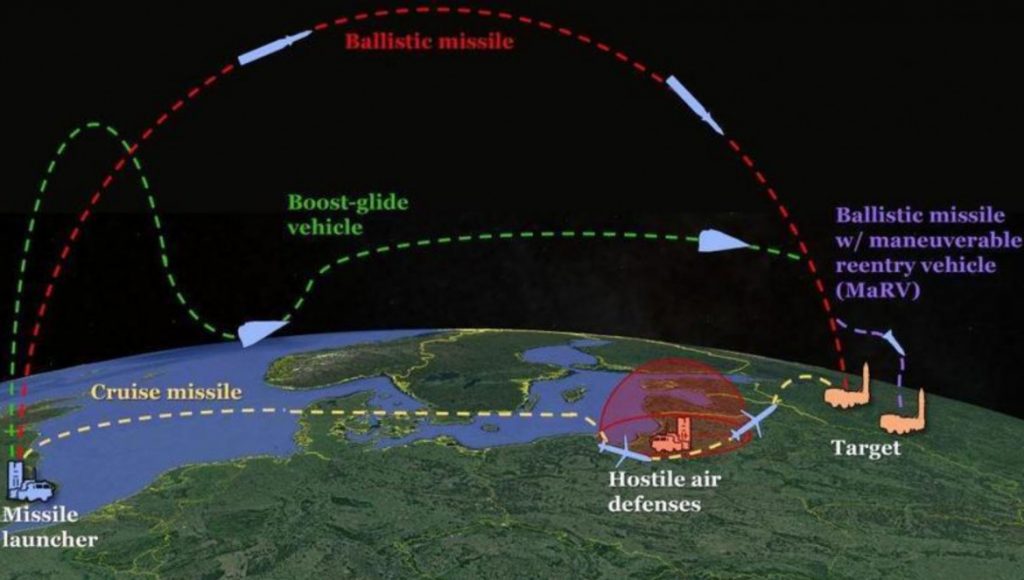Manlio Dinucci (the poster, 23 March 2021)

When about six years ago we made headlines on the Manifesto (9 June 2015) «The missiles return to Comiso?», our hypothesis that the US wanted to bring their nuclear missiles back to Europe was ignored by the entire political-media arc. Subsequent events have shown that the alarm, Unfortunately, it was well founded. Now, for the first time, we have official confirmation. He gave it a few days ago, on 11 March, one of the top US military authorities, General James C. McConville, Chief of Staff of the United States Army. Not in an interview with CNN, but in an intervention - of which we have the official transcript (https://cpb-us-e1.wpmucdn.com/blogs.gwu.edu/dist/2/672/files/2018/02/DWG-McConville-210311.pdf) – a un meeting di esperti alla George Washington School of Media and Public Affairs. General McConville not only reports that the US Army is preparing to install new missiles in Europe, evidently directed against Russia, but it reveals that they will be hypersonic missiles, a new extremely dangerous weapon system. This creates a very high risk situation, similar or worse than that in which Europe was during the Cold War, as the first line of the nuclear confrontation between the US and the USSR.
Hypersonic missiles - with speeds greater than 5 times that of sound (Mach 5), ie more than 6.000 km / h - constitute a new weapon system with a nuclear attack capacity superior to that of ballistic missiles. While these follow an arc trajectory for the most part above the atmosphere, hypersonic missiles instead follow a low-altitude trajectory in the atmosphere directly towards the target, which they reach in less time by penetrating the enemy defenses (see details).
In his speech at the George Washington School of Media and Public Affairs, General McConville reveals that the US Army is preparing a "task force" with "long-range precision fire capabilities that can go anywhere, composed of hypersonic missiles, medium range missiles, missiles for precision attacks "and that" these systems are capable of penetrating the space of the anti-aircraft barrage ". The general states that "we plan to deploy one of these task forces in Europe and probably two in the Pacific" (evidently directed against China). He then stresses that “we are building them right now, while we are talking ".
This is confirmed by the DARPA (Defense Advanced Research Projects Agency). In an official statement (https://www.darpa.mil/news-events/2021-01-21) informs that he has commissioned Lockheed Martin to manufacture "a ground launch hypersonic intermediate-range missile system", ie missiles with a range between 500 E 5500 km of the category that was prohibited by the Intermediate Nuclear Forces Treaty signed in 1987 by Presidents Gorbachev and Reagan, torn apart by President Trump in 2019. According to the technical specifications provided by DARPA, The new system allows hypersonic weapons glide with rocket propulsion to hit critical and priority targets quickly and accurately, penetrating modern enemy air defenses. The advanced rocket propulsion can carry various war loads over multiple distances and is compatible with mobile land launch platforms, that can be deployed quickly ".
The Army Chief of Staff and the Pentagon Research Agency therefore inform that the United States will soon deploy to Europe (there is talk of a probable first base in Poland or Romania) hypersonic missiles armed with "various war loads", that is, of nuclear and conventional warheads. Intermediate-range nuclear hypersonic missiles installed on "mobile land platforms", ie on special vehicles, they can be quickly deployed in the NATO countries closest to Russia (for example the Baltic republics). Having already today the ability to fly at approx 10.000 km/h, hypersonic missiles will be able to reach Moscow in approx 5 minutes. Russia is also building hypersonic intermediate-range missiles but, launching them from their own territory, it cannot hit Washington. However, the Russian hypersonic missiles will be able to reach US bases in a few minutes, first of all the nuclear ones such as the bases of Ghedi and Aviano, and other goals in Europe. The Russia, like the United States and others, is deploying new ICBMs: the Avangard is a hypersonic vehicle with a radius of 11.000 km and armed with more nuclear warheads than, after a ballistic trajectory, glides for over 6.000 km at the speed of almost 25.000 km/h. Hypersonic missiles are also being built by China. Because hypersonic missiles are guided by satellite systems, the confrontation takes place more and more in space: for this purpose it was created in 2019 the US Space Force from the Trump administration.
Hypersonic weapons, which are also equipped with the air and naval forces that have greater mobility, open a new phase of the nuclear arms race, making the New Start treaty just renewed by the US and Russia largely superseded. The race passes more and more from the quantitative level (number and power of nuclear warheads) to the qualitative one (speed, penetrating capacity and geographical location of nuclear vectors). The answer, in the event of an attack or suspected such, is increasingly entrusted to artificial intelligence, who must decide to launch nuclear missiles in seconds or fractions of a second. Exponentially increases the chance of nuclear war by mistake, risked several times during the Cold War. "Doctor Strangelove" will not be a mad general, but a crazed supercomputer. Lacking the human intelligence to stop this mad rush to catastrophe, at least the survival instinct should be triggered, awakened so far only for Covid-19.
The various types of hypersonic missiles
Those with rocket propulsion release a warhead glide (to glider) gliding at hypersonic speed between 50 E 100 km of altitude, maneuvering to avoid interceptor missiles.
Those equipped with statoreactor (jet propeller) they fly low, at hypersonic speed, following the contours of the terrain and maneuvering like cruise missiles.
Given the curvature of the Earth, they are spotted by ground radars only when they are a 1-2 minutes from the goal. Their radar sighting is made even more difficult by the fact that, at hypersonic speed, a sheath of high temperature plasma forms around the head.
The United States is building the following hypersonic missiles:
An intermediate-range missile on a mobile launcher for the Army, developed by DARPA and built by Lockheed Martin under the Operational Fires program.
A long-range rocket-propelled missile and warhead glide, launched from the ground, for the Army.
A ready-to-attack missile with rocket propulsion and warhead glide, launched by surface units and submarines of the Navy.
One stator-jet and one rocket-propelled and warhead missile glide for the Air Force.
(the poster, 23 March 2021)

